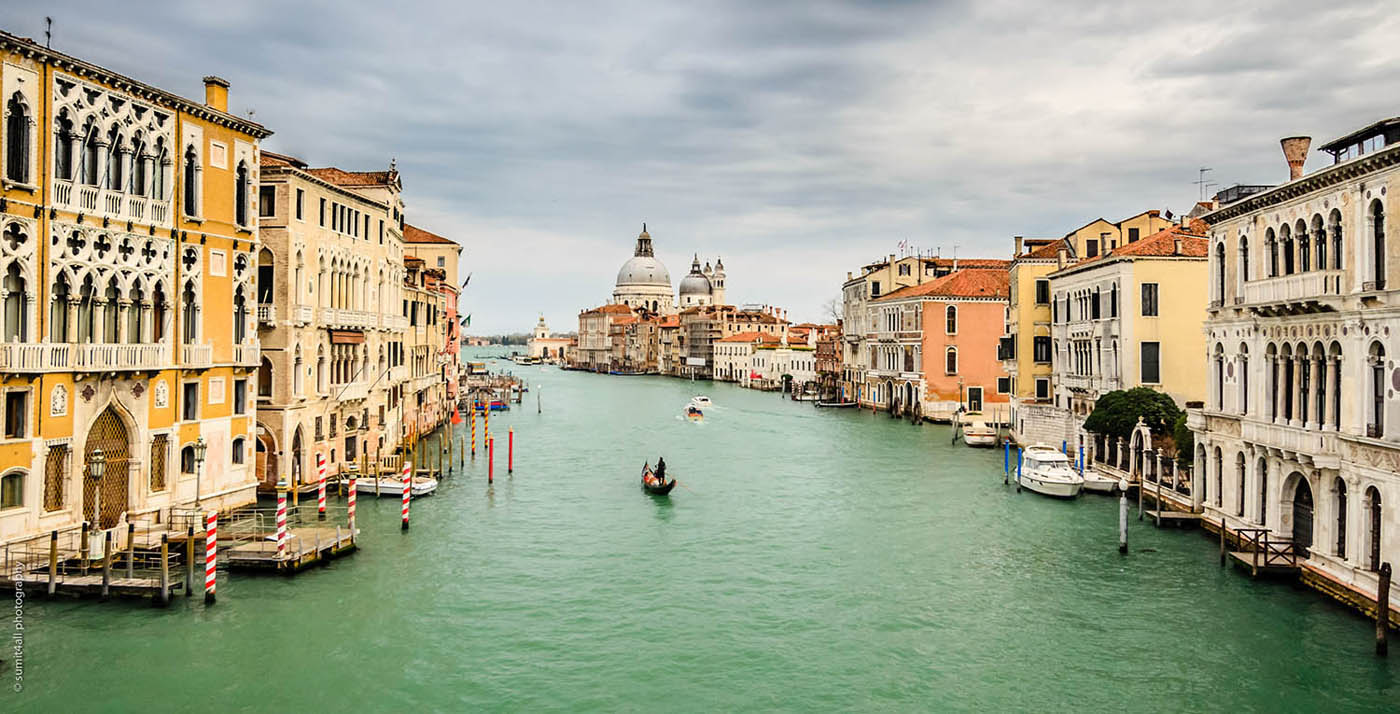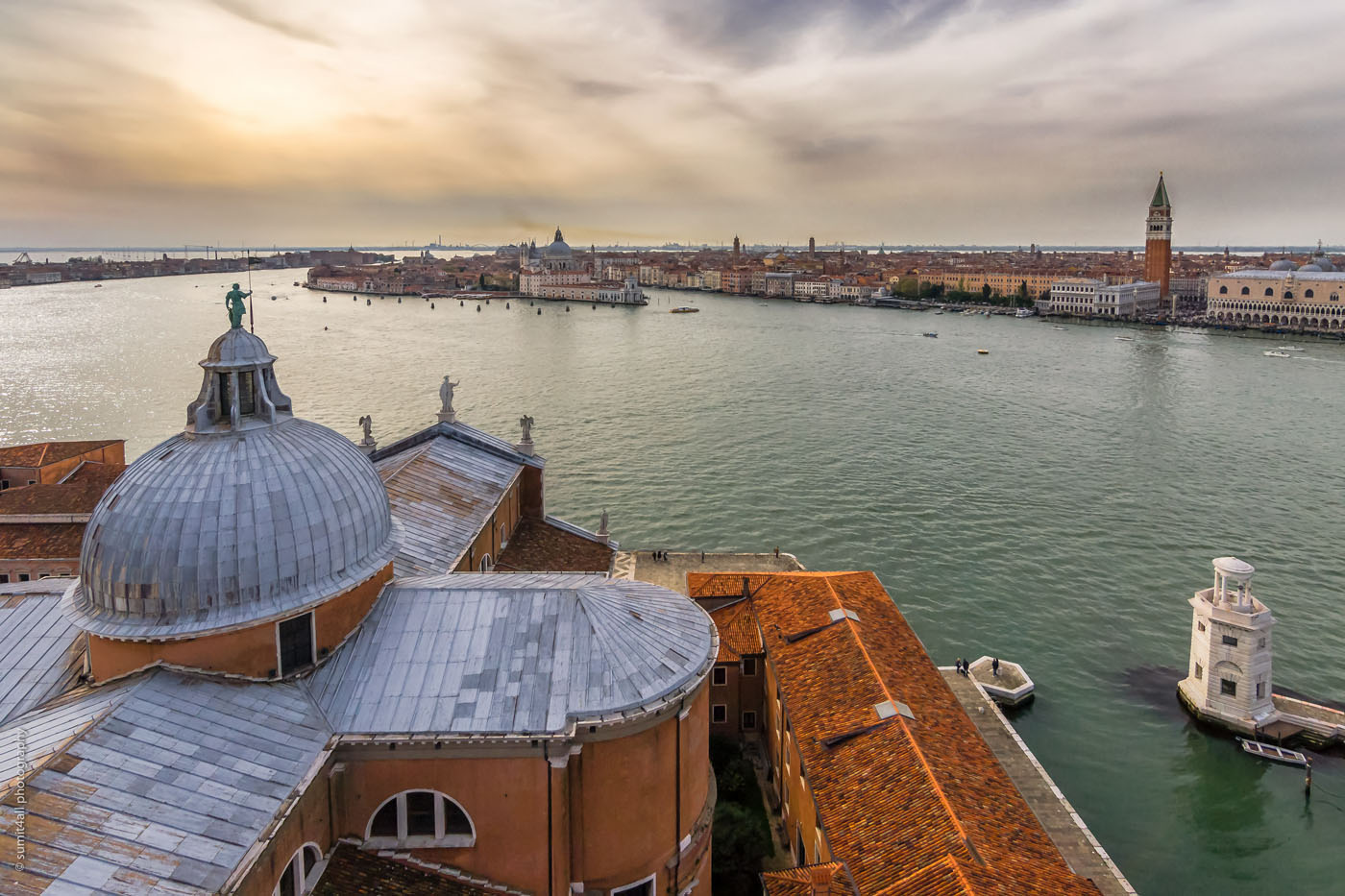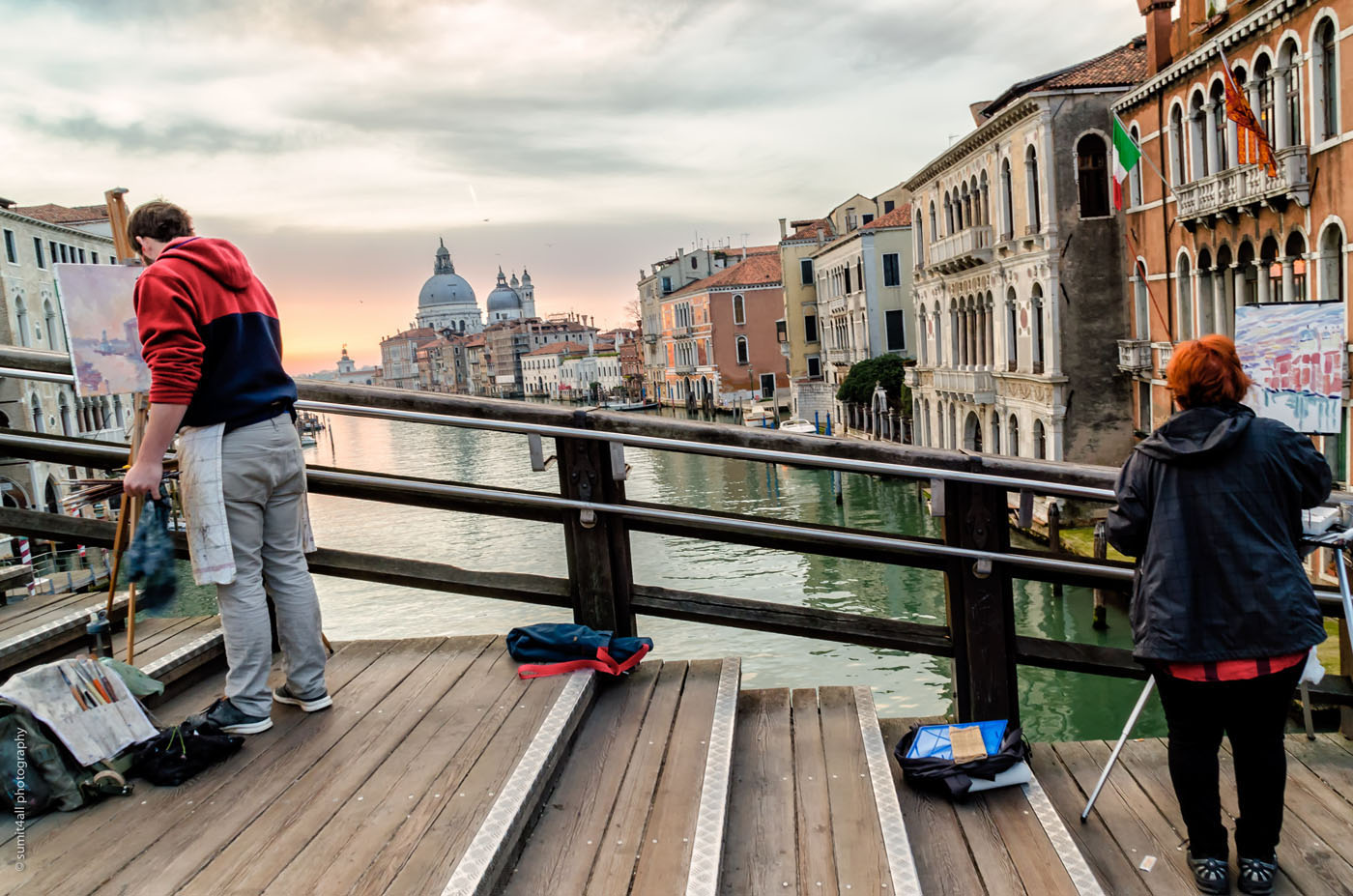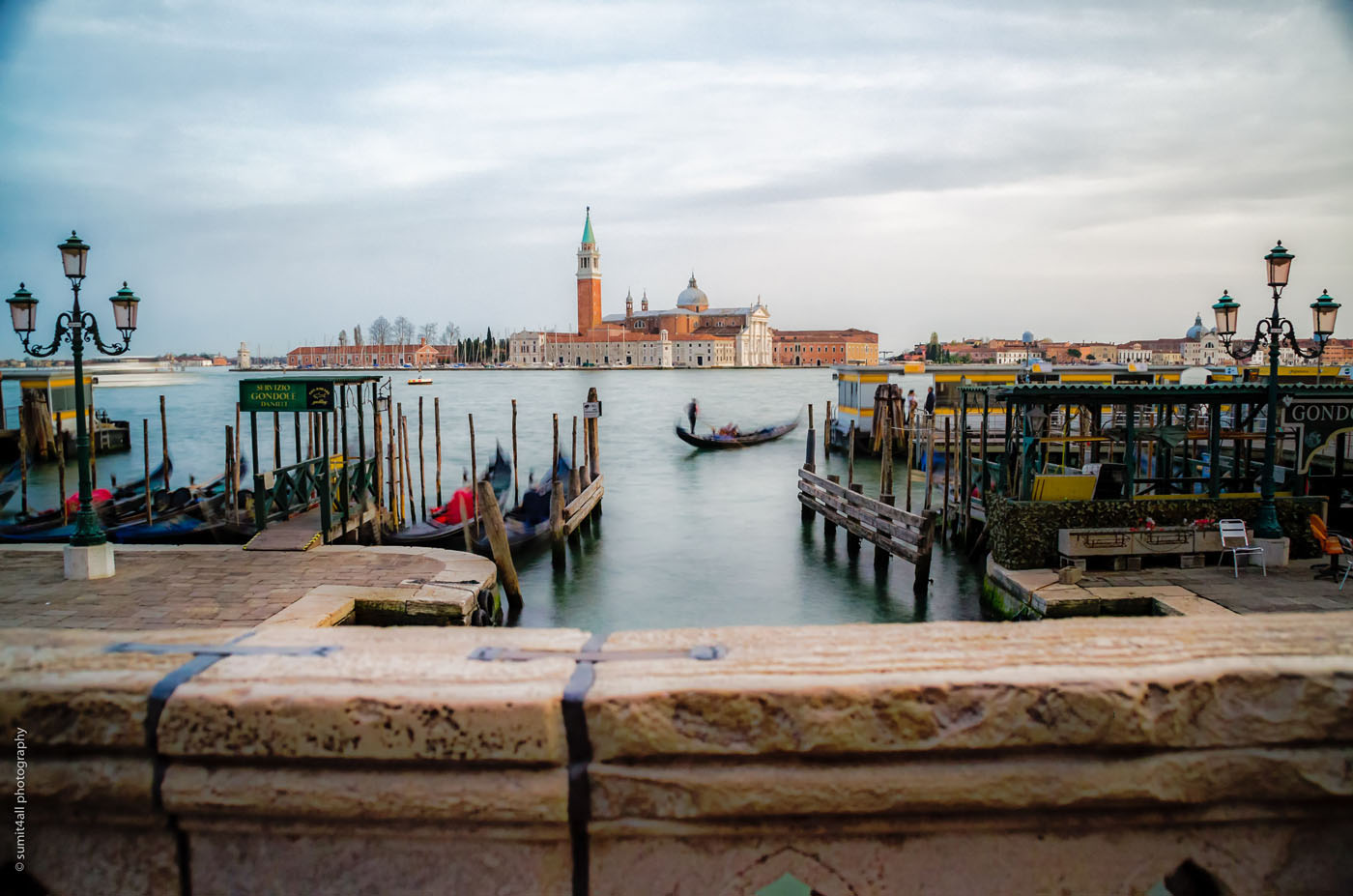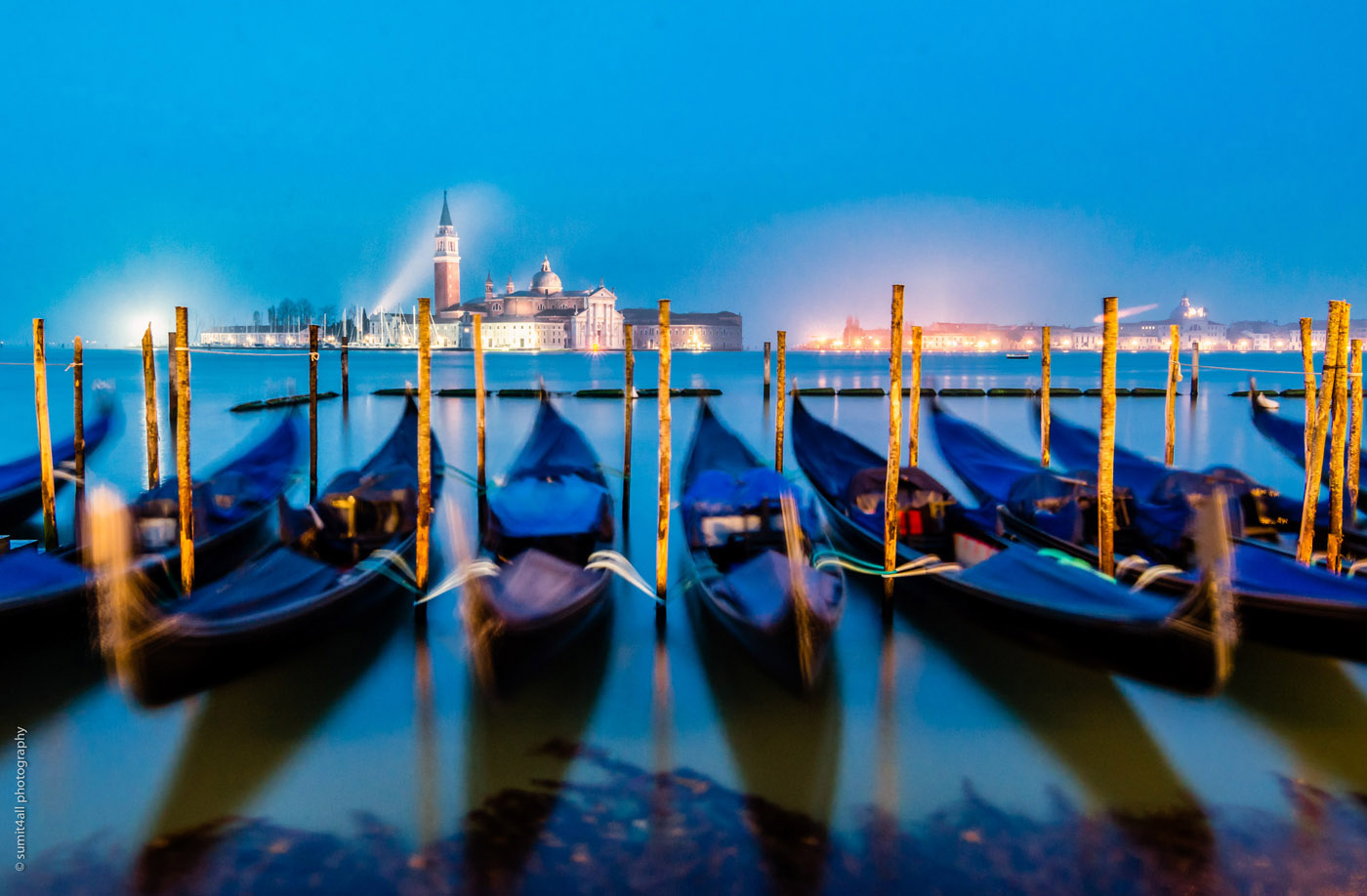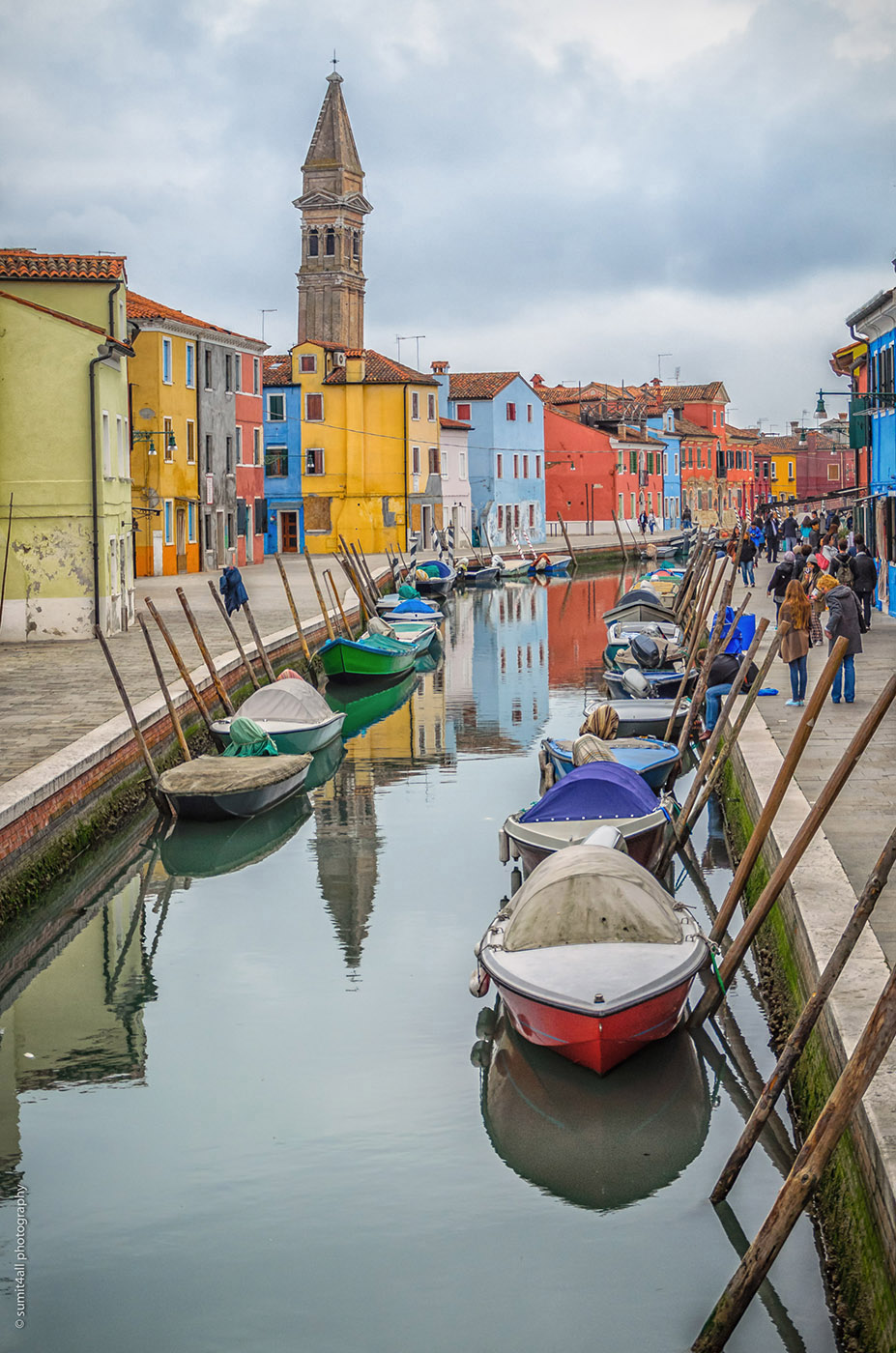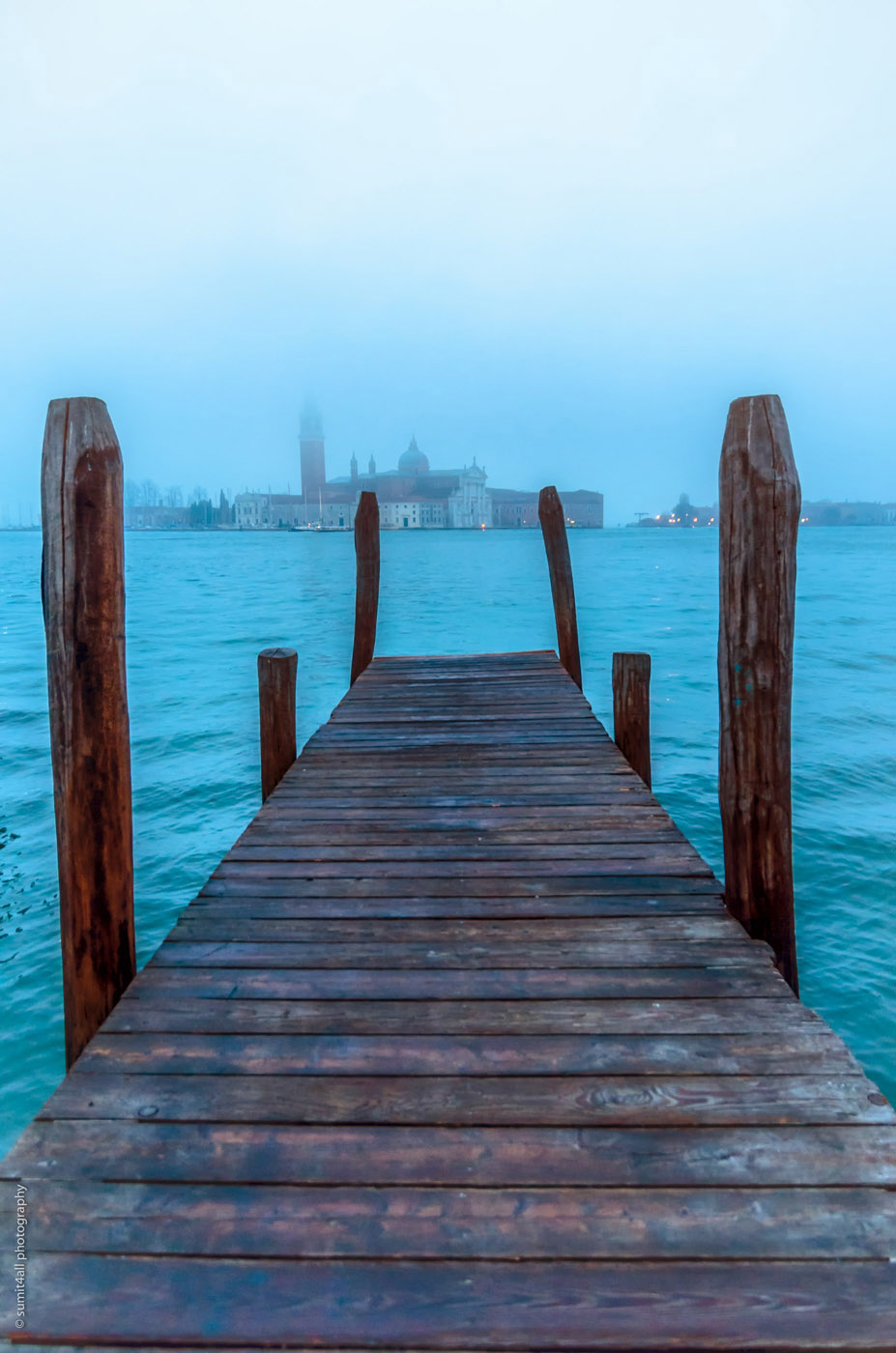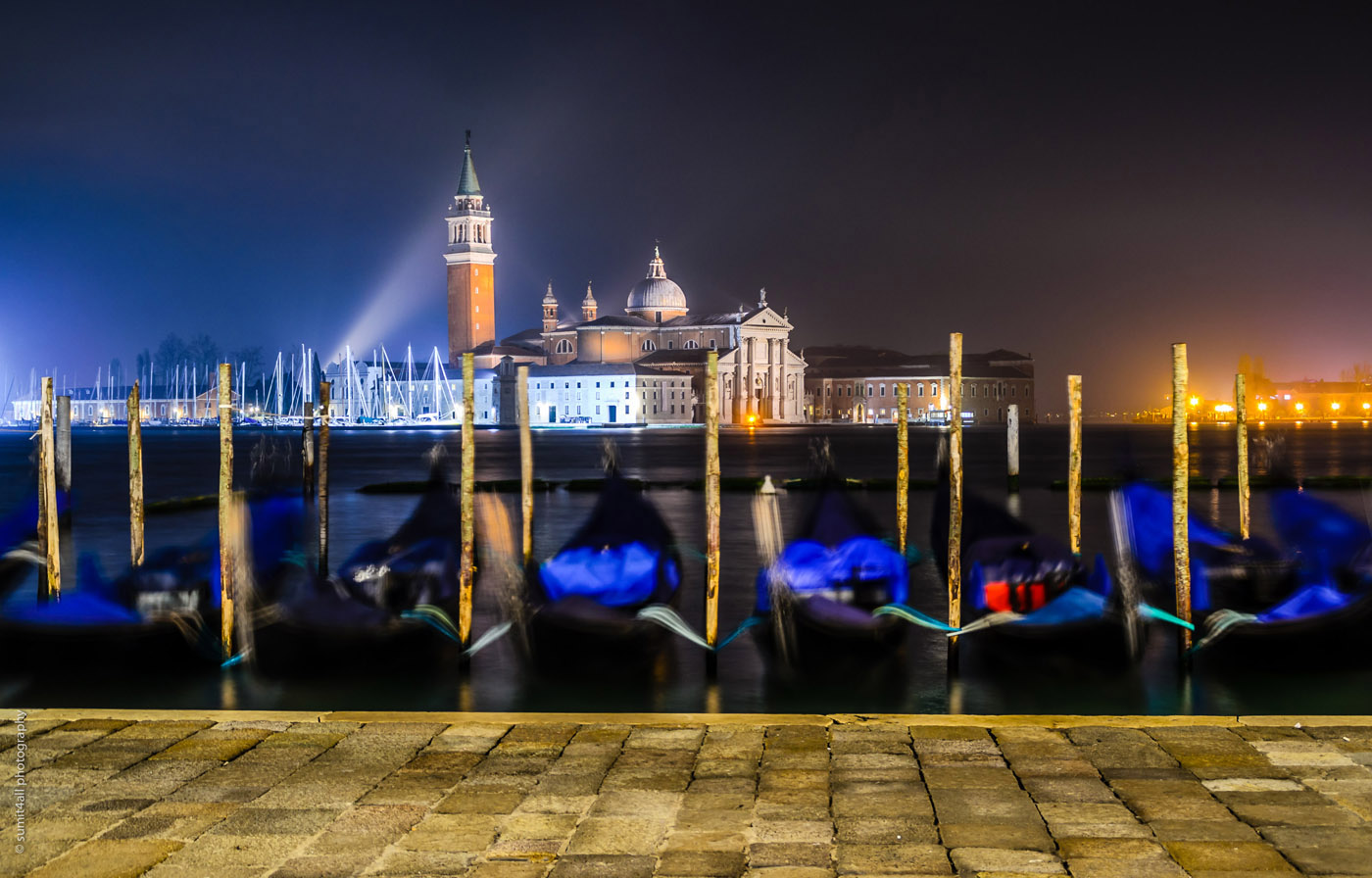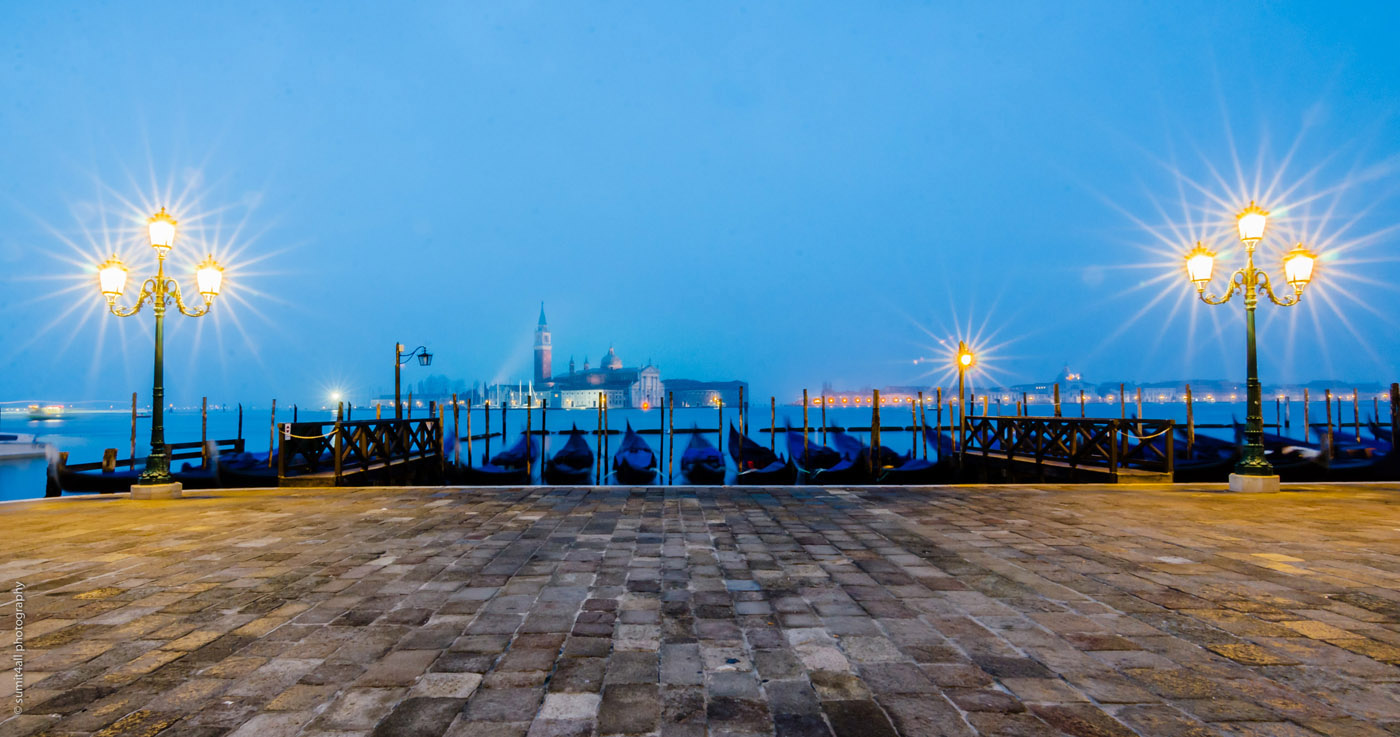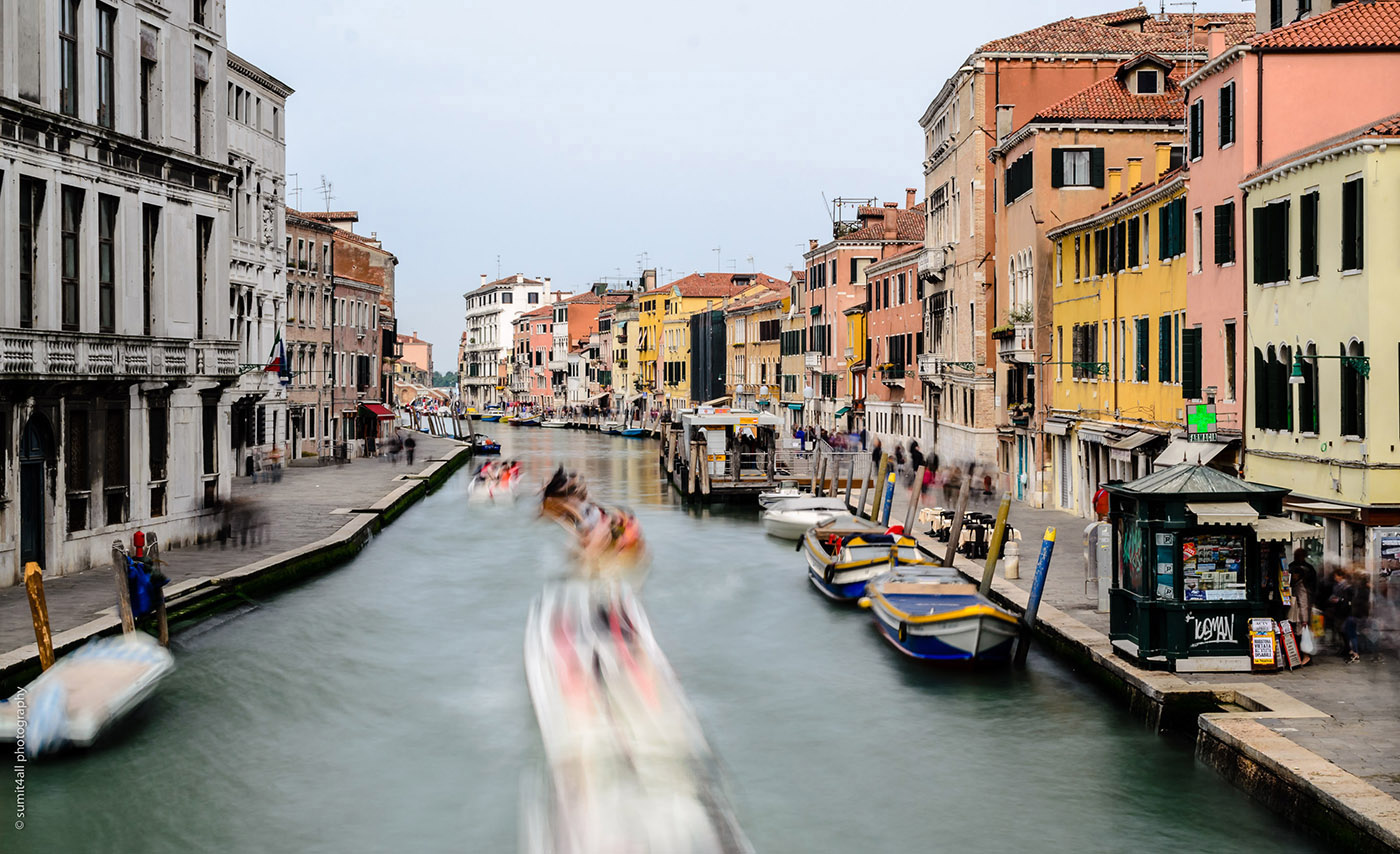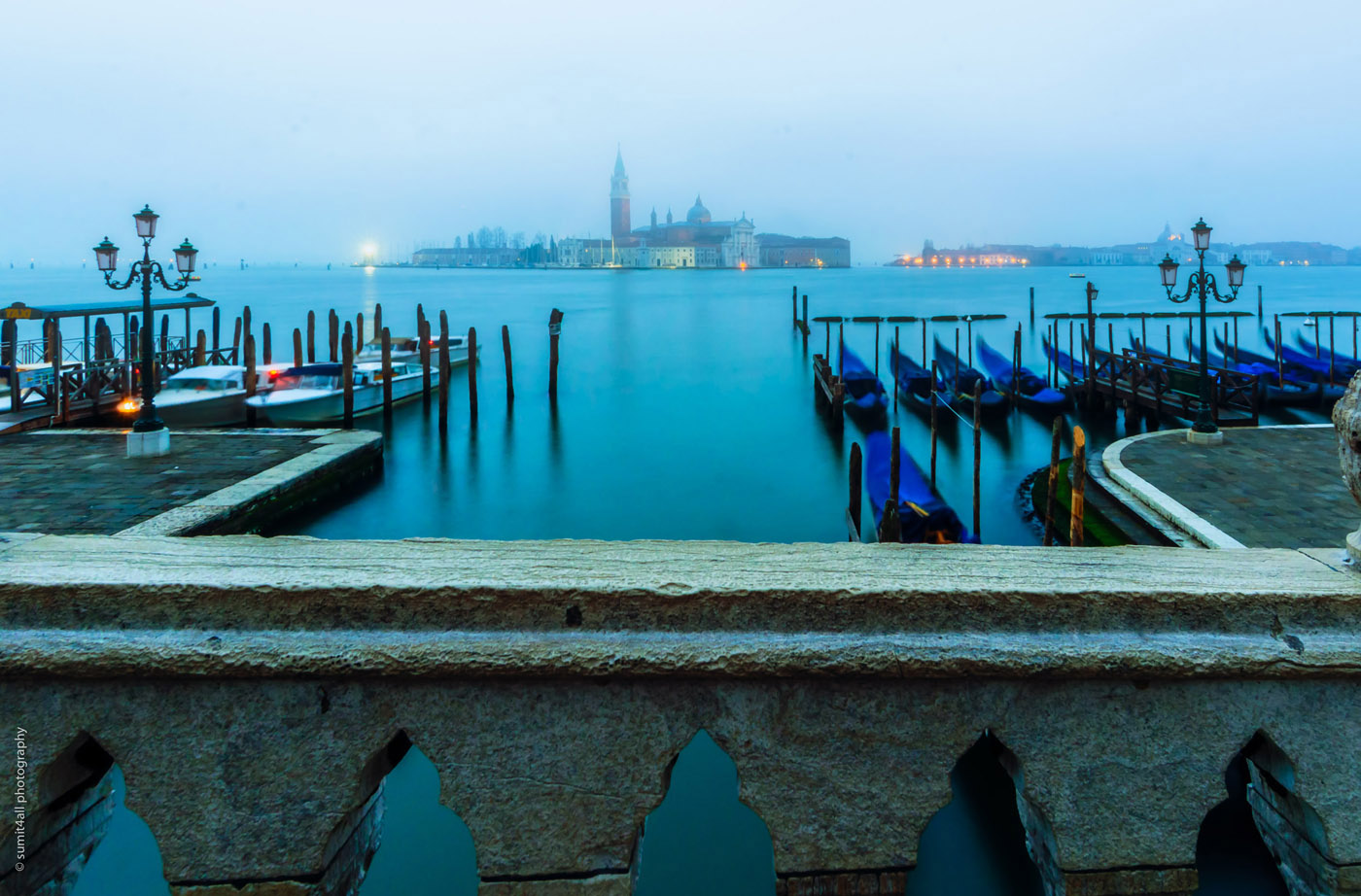With a powerful and glorious past, the city of Venice today has been known for long as the romantic tourist’s abode. Venice is a wonder of crisscrossing canals speckled with gondolas and lined by colourful buildings which are adorned by pretty flower pots on balconies. The narrow streets make for a cosy setting, and the hundreds of bridges that make you feel like you are gazing into a real-life watercolour painting!
A Brief History
Venice has been a prominent feature on the maps of the world since time immemorial. According to legends, the city’s origins date back to the 5th century when the first inhabitants sought refuge at Rialto, a small island in the lagoon, from Barbarian invasions. Venice was one of the four Maritime Republics (along with Pisa, Amalfi, and Genoa) and became a powerful naval base due to its trading based economy. Its power grew and it soon began to expand its power along the Adriatic Sea. A series of conquests and the participation of Venice in the gory Crusades, Venice soon became one of the strongest maritime powers on the Eastern Mediterranean.
During the Renaissance period, Venice saw an artistic boom and began to rival the cities of Rome and Florence as a cultural centre. (Even today, one can see artists immortalising the romantic city streets on their own canvas)
Arts and Culture
Various arts flourished and the city gave the world of art noted names such as Titian, Tintoretto, Veronese, Jacopo and Giovanni Bellini, Giovanni Battista, Tiepolo and Pietro Longhi, the sculptor Antonio Canova and the architect Palladio. Thereon, Venice witnessed French domination when Napoleon ended the Serrenissima. Numerous works of art were plundered and taken back to France.
The beginning of the 19th century saw an industrial boom in Venice with construction of roadways and bridges that connected neighbouring areas to the city. What was spared in the World Wars succumbed to the great floods of 1966. Restoration of the city thereafter brought us the Venice we see today.
Today’s Challenges
However, the beautiful city is once again under struggle, this time from the effects of global warming and the rising sea levels that could sink the city under water. Apart from the continuous challenge of being surrounded by water, the city is also facing overcrowding due to a huge number of tourists visiting the city. As more and more tourists throng to see the beauty of Venice, the quality of life for the locals have eroded, and they have moved out of the city in hordes.
In the summer of 2017, a march by organised by the locals in Venice protesting against the huge number of tourists visiting the city. The people who call the city home have dwindled from 175000 after the World War II to only 50000 now. Now compare this to the number of visitors visiting Venice each year – 28 million, which makes it an average of more than 75000 tourists every day, more than the number of locals.
Photographing Venice Responsibly
The popularity of the city makes it a ‘must visit’ on every traveller’s agenda, and so was it on mine. For a photographer, an over-crowded city, especially one that is doused in history, art, architecture and a breathtaking view at every nook and corner can turn out to be a thorough disappointment.
Hence, when I wanted to visit Venice, I wanted to do it in a way that is responsible to the ecosystem that supports a city like Venice, while at the same time allowing me to get the kind of photographs I wanted to get. My plan was simple. I had to cover the city at a time when the crowds were the least, and when I would not add to the problems or annoyances the locals are facing.
The art of travel photographing (for me) lies in capturing destinations just as they have been for ages, and without the hustle bustle of tourists and all the mess that comes along with it. While I was always aware of the fact that I myself was a tourist photographing the city, I still did it in a way that I felt responsible by following the below 5 steps :-
1. Visit During Off Season
Firstly, I planned my trip during the off season. I visited in April 2016, a time when it was easiest for me to get the make the best shots without tourists. The off-seasons in Venice span over the winter months (barring the Christmas and New Year’s week) and February to April, just before the summers kick in.
2. Keep Off The Common Track
The most commonly visited areas in Venice are the Piazza San Marco, the St. Mark’s Basilica, and the Grand Canal. The tourist in me definitely did a quick visit of these areas, however, I spent a lot of time in the far off islands like Burano and Murano which are less visited. Considering that the popular crowded centre of the city is what everyone focusses on, my interest lay in the untouched unpopular islands that exude their own beauty.
3. Photograph Early in the Morning
Travelling to exotic locations and capturing the beauty of all that a city has to offer is exciting and tiring at the same time. I like capturing my photographs during the early morning hours between 4am and 7am, a time when most tourists are sleeping, and I get the whole city to myself. The wind is also very still in the morning making the water shots really beautiful.
I also feel that when the streets are almost empty, I witness the city in its most serene and untouched form. By the time the hustle bustle starts and the city starts to get back to tackle a new day, it is time for me to pack up, already having made some photographs in the few hours before that.
Apart from lack of overwhelming crowds, I personally prefer the morning time because it has the best light to offer, hues of gold and blue, with the fog and the mist working as natural light diffusers. It is not possible to get perfect lighting all the time and one has to make do with what nature offers. The fog and the mist give the photographs a dreamy look and the photographs themselves emit a quiet meditative aura. A look that I feel gives a very serene feeling to the viewer.
4. Using Long Exposures
I used long exposures using an ND filter to photograph Venice in the areas which were a bit crowded. Long exposures helped me to blur out the people in the photographs, and make the city look clean and smooth. I had to use a ND filter to reduce the light entering the lens for the same. The above photograph is an example of using long exposure to capture the essence of Venice – the continuous flow of tourists yet the unmissable charm of the city is visible.
5. Do Your Homework Well
Of course all of the above points are not possible without advance planning and preparation. I always do a little bit of homework before beginning any photography journey. Scanning the internet for photographs of the location and reading about the history and challenges the city faces helps me to get comfortable with the area I am going to shoot. Only due to the early research was I aware of the tourism problem the city faces and was able to adapt my plans accordingly.
My efforts in trying to eliminate the crowds in my photographs also reflect my desire to capture Venice without annoying tourists like me. The beauty of the city is fast crumbling under the pressure of the large crowds and the ever rising waters. The plight of the locals motivated me to travel during the off-season, an effort that every tourist should and can make.
Venice shall always be close to my heart. Not just for the romantic beauty of the city that I got to experience first-hand, but also in terms of the lessons I learnt from talking to a few locals about the harsh realities of living on a city built over water.
I got the opportunity to learn a lot while I made these photographs in this photo essay. I hope you enjoy viewing them as much as I did making them.

